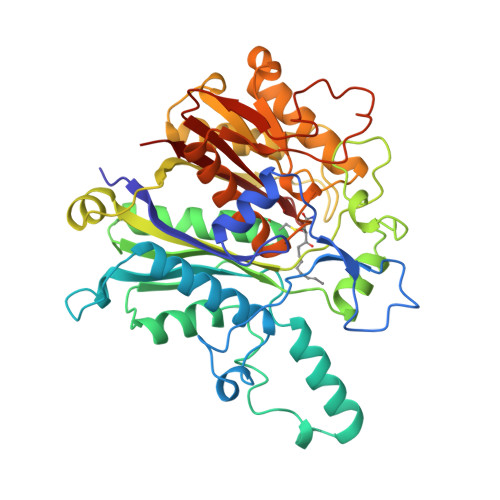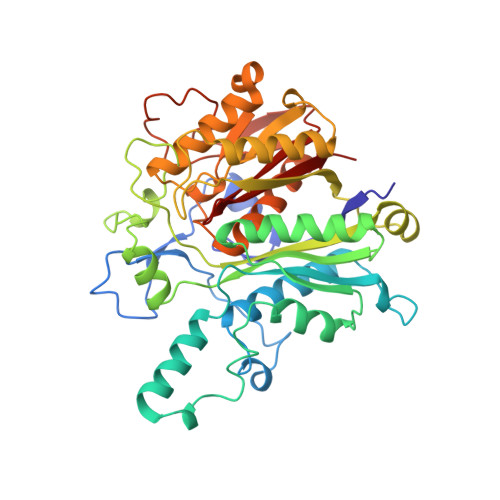Structure of the complex between the antibiotic cerulenin and its target, beta-ketoacyl-acyl carrier protein synthase.
Moche, M., Schneider, G., Edwards, P., Dehesh, K., Lindqvist, Y.(1999) J Biological Chem 274: 6031-6034
- PubMed: 10037680
- DOI: https://doi.org/10.1074/jbc.274.10.6031
- Primary Citation of Related Structures:
1B3N - PubMed Abstract:
In the biosynthesis of fatty acids, the beta-ketoacyl-acyl carrier protein (ACP) synthases catalyze chain elongation by the addition of two-carbon units derived from malonyl-ACP to an acyl group bound to either ACP or CoA. The enzyme is a possible drug target for treatment of certain cancers and for tuberculosis. The crystal structure of the complex of the enzyme from Escherichia coli, and the fungal mycotoxin cerulenin reveals that the inhibitor is bound in a hydrophobic pocket formed at the dimer interface. Cerulenin is covalently attached to the active site cysteine through its C2 carbon atom. The fit of the inhibitor to the active site is not optimal, and there is thus room for improvement through structure based design.
Organizational Affiliation:
Department of Medical Biochemistry and Biophysics, Doktorsringen 9A1, Karolinska Institutet, S-171 77 Stockholm, Sweden.



















